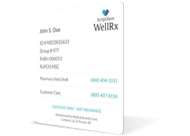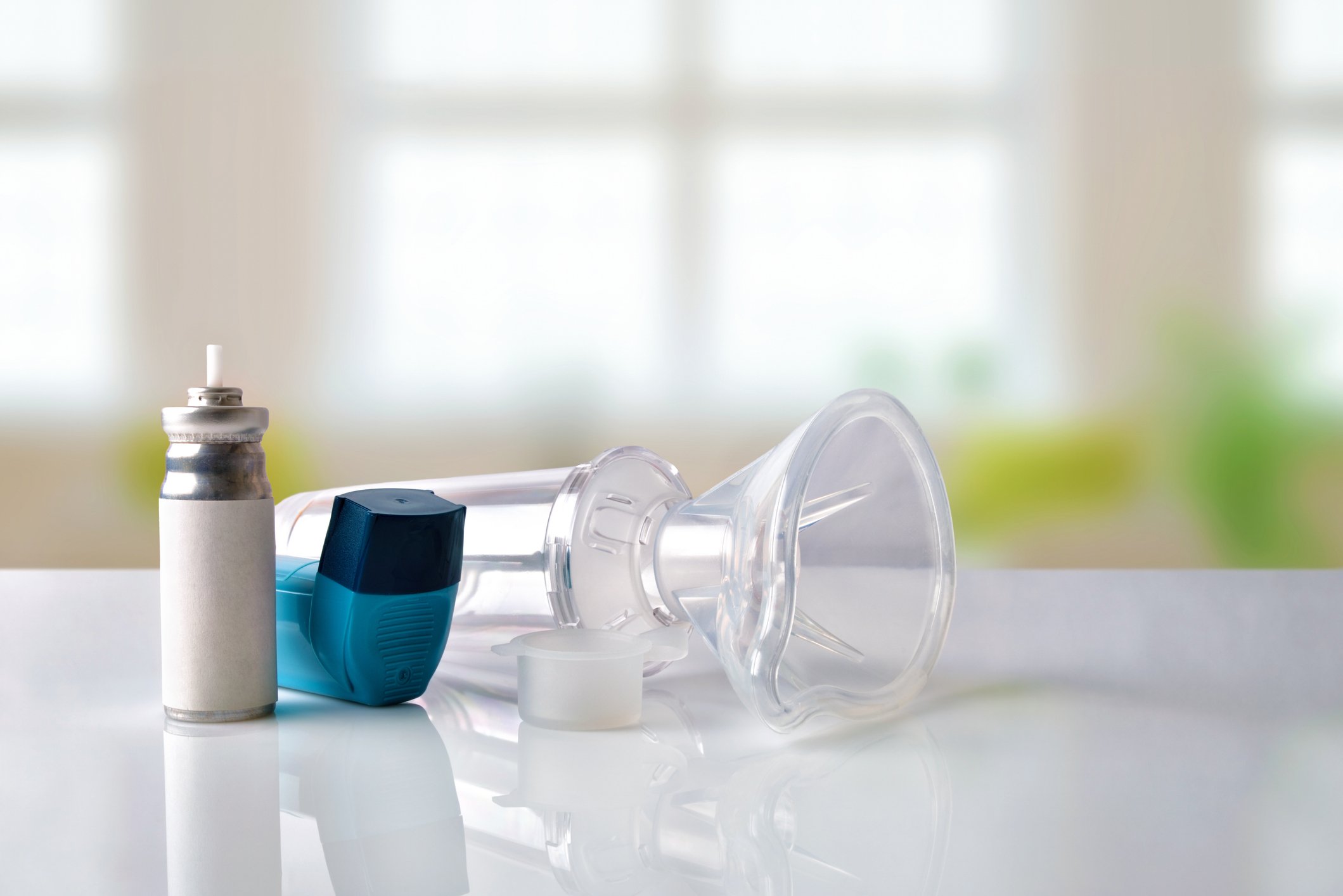Copyright 2025
Medical Security Card Company, LLC
All Rights Reserved
We take the privacy of your personal information seriously. By signing up I agree to WellRx's terms of use and privacy policy.
By Libby Pellegrini MMS, PA-C
April 03, 2025
A toothache can stop you in your tracks. Sometimes, toothaches stem from a cracked or chipped tooth. However, it can often signal an underlying tooth infection. An infected tooth causes agony, and it can also make you sick and worsen some underlying medical conditions. At the first sign of a tooth infection, it’s important to be evaluated by your healthcare provider to find the best antibiotic for tooth infection.
A tooth infection is typically caused by bacteria. When microscopic bacterial species enter a tooth or the surrounding soft tissues, they can cause several symptoms. These range from pain and swelling at the site of infection to pus-like discharge and a foul smell. If you are experiencing these symptoms, it’s likely that you have a tooth infection and need an antibiotic. Fortunately, several safe antibiotics can help treat gum and tooth infections.
What antibiotic for tooth infection? Not all tooth infections are created equally, so the best antibiotic for tooth infection varies from person to person. Tooth infections can be caused by a single species of bacteria, but, more typically, they are “polymicrobial,” meaning that several mixed species are causing an infection. An antibiotic aims to target the most common species of bacteria that cause tooth and gum infections and to stop them in their tracks. Sometimes a tooth infection will progress to a dental abscess, also known as a tooth abscess. An abscess is a collection of pus-like fluid within the structure of the tooth or the surrounding structures. Tooth abscess antibiotics are often the same antibiotics used for dental infections, dental abscesses, and toothaches. The most common antibiotics used for tooth infections appear in the list below.
| Antibiotic | Drug Class | Common Dosage (Adults) | WellRx Savings Card |
| Penicillin | Penicillin | 250 mg | Link Out |
| Amoxicillin | Penicillin | 500 mg, 875 mg | Link Out |
| Metronidazole | Nitroimidazole | 500 mg | Link Out |
| Clindamycin | Macrolide | 150 mg, 300 mg | Link Out |
| Cephalexin | Cephalosporin | 250 mg, 500 mg | Link Out |
You may be interested in looking for OTC antibiotics for tooth infections. However, currently, no over-the-counter antibiotics can fight a tooth infection. This is actually for a good reason because antibiotics are best used when prescribed by a medical practitioner or dentist. This helps control the misuse of antibiotics, monitor the side effects of antibiotics, and prevent the escalation of resistance to antibiotics within the larger population. If you are searching for antibiotics for toothache, antibiotics for tooth abscess, or dental abscess antibiotics, it’s best to consult a medical provider.
Antibiotics are necessary to help properly treat gum infections and prevent the development of serious conditions such as deep space infections and severe disease. However, you will likely not feel the full effect of antibiotics after just the first dose of antibiotics for gum disease. It may take a few doses of the antibiotic to reach the proper blood level so that the antibiotics can take their full effect. After the antibiotics are in full “fight mode,” it is important to continue taking the full course of the medication even if you are already starting to feel better.
It’s important to follow up with a dentist after you have been treated with dental infection antibiotics. This can help you stay on top of your dental care and prevent repeated dental infections and repeated tooth abscess antibiotics. While it is technically okay to take antibiotics more than once for dental infections, antibiotics can have side effects which you are better off avoiding by staying on top of routine dental care.
While you’ve been wondering about what is the strongest antibiotic for abscesses, you may have also been searching for natural remedies and other tooth infection treatments. Antibiotics for gum disease are typically necessary for full treatment of infection; however, these other remedies may also be helpful:
One of the most important ways that you can improve your health is by practicing preventive care. To help prevent tooth infection, and the need for dental infection antibiotics, experts at the US Centers for Disease Control and Prevention (CDC) recommend the following methods:
| Get your free ScriptSave® WellRX account and start saving on your medications. The average participant sees up to 80% savings* on prescription medications. |
*DISCOUNT ONLY – NOT INSURANCE. The program is administered by Medical Security Card Company, LLC.
Yes, amoxicillin is one of the most commonly used antibiotics for mouth infections. It is a member of the penicillin family, which is a well-established class of medications used for tooth abscess antibiotics. Sometimes healthcare providers prescribe amoxicillin instead of penicillin because it has a dosing schedule that is easier to follow.
Cephalexin, also known as Keflex, can be used for a tooth infection; however, it is not considered to be the first line among toothache antibiotics. Cephalexin is often used as an alternative to penicillin antibiotics in people who have a mild penicillin allergy because it is similar in its scope but has a low chance of causing an allergic reaction in people with mild penicillin allergies.
Doxycycline is an antibiotic that is used to treat infections in the body; however, it is not considered to be the first line when considering what antibiotics treat tooth infections. Doxycycline is more commonly used to help treat gum disease, and it is considered one of the most important gingivitis treatment antibiotics. Doxycycline may be used as an alternative medication in people with tooth infections who have a severe penicillin allergy and can’t be treated with the more common penicillin class.
Keflex, also known as Cephalexin, can be used for a tooth infection; however, it is not considered to be the first line among toothache antibiotics. Keflex is often used as an alternative to penicillin antibiotics in people who have a mild penicillin allergy because it is similar in its scope but has a low chance of causing an allergic reaction in people with mild penicillin allergies.
The typical course of doxycycline for tooth infection may be up to two weeks, although you may start to feel relief after a few doses. When healthcare providers use doxycycline as antibiotics for gum disease (also known as periodontal disease), the course of the medication may be much longer, spanning months.
When treating periodontal disease, also known as severe gum disease, healthcare providers may use a combination of antibiotics. These may include amoxicillin and metronidazole. If you have an allergy to penicillin, cephalosporins, macrolide antibiotics, and doxycycline may also be helpful.
Treating gingivitis often requires a multi-faceted approach, including deep cleaning, medicated rinses, and adherence to a good oral hygiene routine. When systemic gum infection antibiotics are needed for gingivitis, the best antibiotics for gingivitis typically come from the penicillin class (which includes amoxicillin), or doxycycline. Antibiotics for swollen gums can help treat the infection fully.
Yes, five days of antibiotics can be long enough to treat a tooth infection. The exact length of the medication course will depend on the severity of your infection, your general health status, and your other medical history. Some medications may need to be taken for longer, such as for a full week.
The best antibiotic after a tooth extraction is similar to the best antibiotic for dental infection. Antibiotics are sometimes given after tooth extractions to prevent the development of a bacterial infection. Bacterial infections after tooth extractions are often caused by the same species of bacteria that cause general tooth infections, so antibiotics such as penicillins, cephalosporins, macrolides, or nitroimidazoles are best.
It can take the full course of the antibiotic treatment for the medication to fully work. However, you can start feeling improvement in symptoms after the first few days. Prescription lengths may vary from 3 to 5 days to 7 to 14 days. It’s important to take the full course of the medication as prescribed. Libby Pellegrini is a nationally certified physician assistant. She currently works in emergency medicine, where she sees and treats a broad spectrum of illnesses across all age ranges. She holds a journalism degree from Northwestern University.
https://my.clevelandclinic.org/health/treatments/antibiotics-for-tooth-infections
https://www.nidcr.nih.gov/health-info/gum-disease
https://www.cdc.gov/oral-health/prevention/oral-health-tips-for-adults.html
https://my.clevelandclinic.org/health/drugs/20418-doxycycline-tablets-periodontitis

For your convenience, use the ScriptSave® WellRx mobile app. Now savings are well in hand, right at the pharmacy counter. Save on your family's prescription medicines.
Learn More
Your choice. Get a ScriptSave WellRx Savings Card. Or Download the free mobile app from the App Store or Google Play Store
Get A Card
ScriptSave WellRx Grocery Guidance leverages leading-edge nutritional data science to help you know which food products on your grocery store shelf are truly good for YOU.
Healthy Foods For YouTags:

July 30, 2025

July 23, 2025

July 16, 2025
You need to log into the site to use this feature
This feature requires registration. Sign up or log in to your free WellRx account to gain access to this and other tools to help make managing your medications and wellness easier.
Benefits Include:
 Store & manage your medication list
Store & manage your medication list
 Medication pricing updates
Medication pricing updates
 Medication information
Medication information
 Pill & refill reminders
Pill & refill reminders
 Medication journal & mood log
Medication journal & mood log
This feature requires registration. Sign up or log in to your free WellRx account to gain access to this and other tools to help make managing your medications and wellness easier.
Benefits Include:
 Store & manage your medication list
Store & manage your medication list
 Medication pricing updates
Medication pricing updates
 Medication information
Medication information
 Pill & refill reminders
Pill & refill reminders
 Medication journal & mood log
Medication journal & mood log
You will be redirected to your program in 5 seconds.
Our Terms and Conditions and Privacy Policy have recently been updated.
By declining you will be logged out of your account